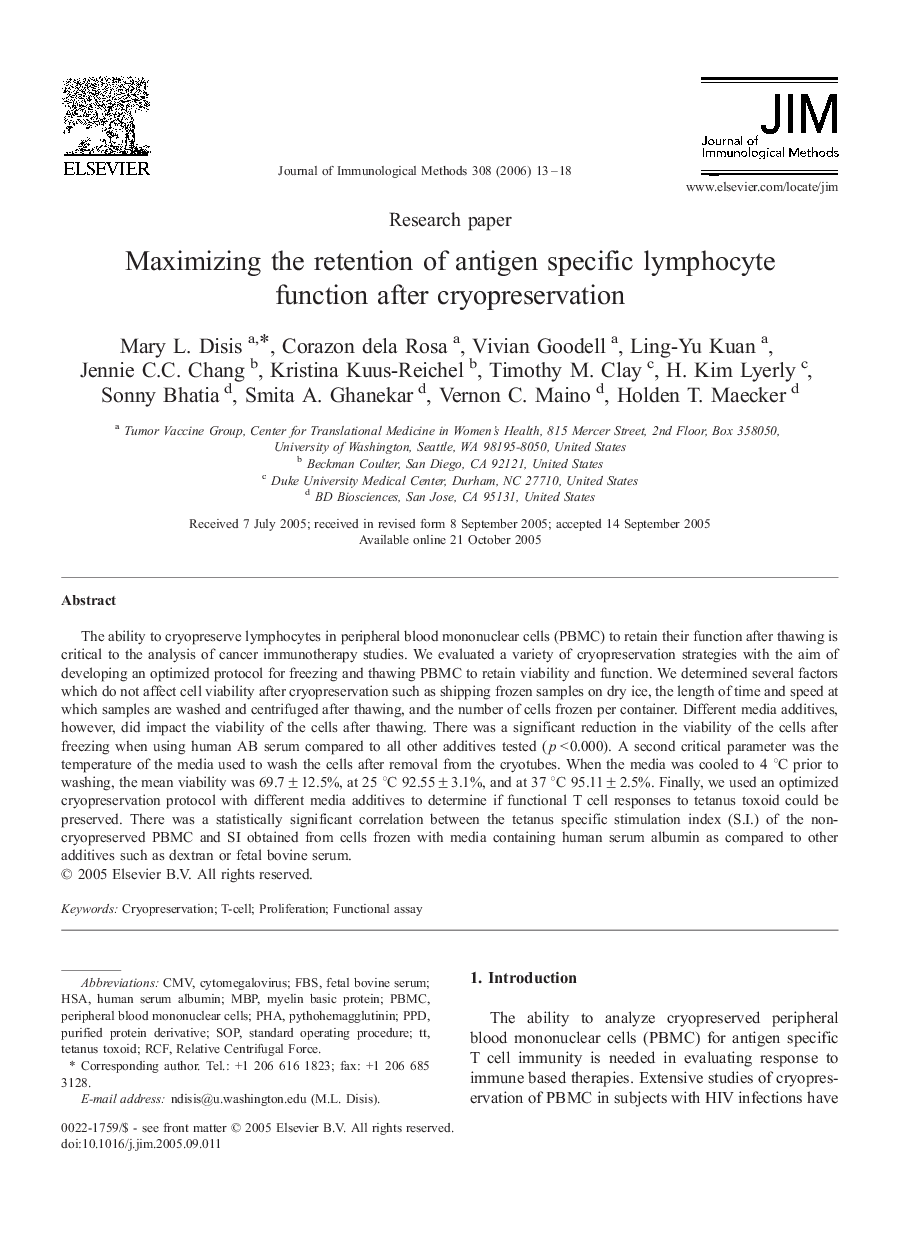| Article ID | Journal | Published Year | Pages | File Type |
|---|---|---|---|---|
| 2089501 | Journal of Immunological Methods | 2006 | 6 Pages |
The ability to cryopreserve lymphocytes in peripheral blood mononuclear cells (PBMC) to retain their function after thawing is critical to the analysis of cancer immunotherapy studies. We evaluated a variety of cryopreservation strategies with the aim of developing an optimized protocol for freezing and thawing PBMC to retain viability and function. We determined several factors which do not affect cell viability after cryopreservation such as shipping frozen samples on dry ice, the length of time and speed at which samples are washed and centrifuged after thawing, and the number of cells frozen per container. Different media additives, however, did impact the viability of the cells after thawing. There was a significant reduction in the viability of the cells after freezing when using human AB serum compared to all other additives tested (p < 0.000). A second critical parameter was the temperature of the media used to wash the cells after removal from the cryotubes. When the media was cooled to 4 °C prior to washing, the mean viability was 69.7 ± 12.5%, at 25 °C 92.55 ± 3.1%, and at 37 °C 95.11 ± 2.5%. Finally, we used an optimized cryopreservation protocol with different media additives to determine if functional T cell responses to tetanus toxoid could be preserved. There was a statistically significant correlation between the tetanus specific stimulation index (S.I.) of the non-cryopreserved PBMC and SI obtained from cells frozen with media containing human serum albumin as compared to other additives such as dextran or fetal bovine serum.
